On the last day of our 10-day, 9-night self-guided trip in Shikoku, our family had planned a morning visit to Ritsurin Garden. Thanks to a free admission voucher offered through a collaboration between the Kagawa Prefecture Tourism Association and China Airlines, we could enter Ritsurin Garden without paying.
After lunch, we planned to return to our hotel, Toyoko Inn Takamatsu Hyogomachi, to pack up and head to Takamatsu Airport. However, we had known for a few days that a typhoon was approaching, so we weren’t sure whether the China Airlines flight would operate as scheduled. Still, we decided to stick to our original plan.
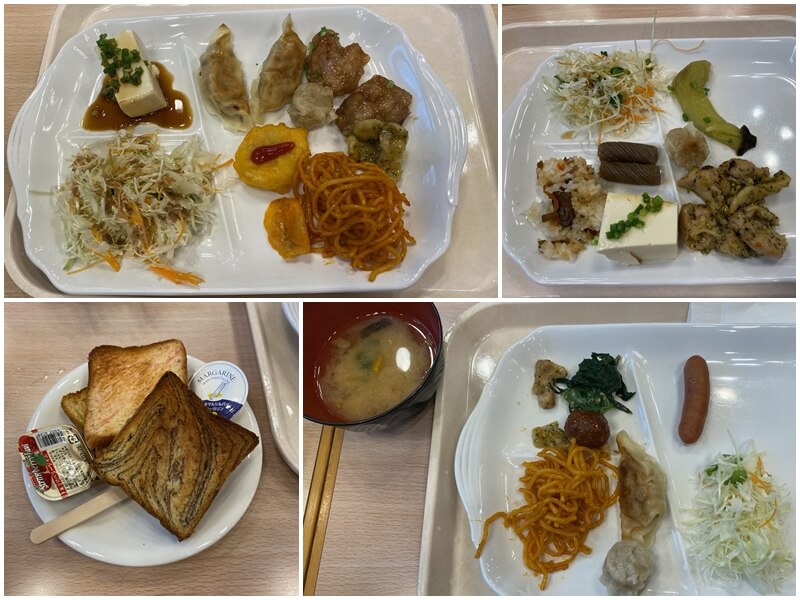
For the final night of our trip, we stayed at Toyoko Inn Takamatsu Hyogomachi — the same hotel where we had spent several nights. The breakfast there was plentiful and satisfying. After finishing breakfast, we headed to Ritsurin Garden.
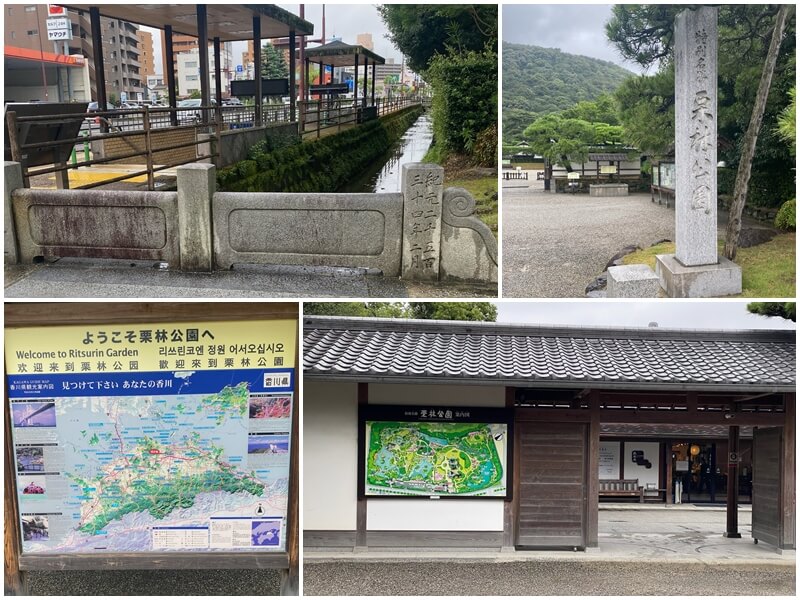
Upon arriving at the garden, we entered through the East Gate and crossed Tokiwa Bridge, which was built in February of the year 2534 of the Japanese imperial era — a bridge with considerable history. At the entrance, there is a stone monument indicating that Ritsurin Garden is a “Special Place of Scenic Beauty.” Among all designated cultural heritage gardens in Japan, Ritsurin Garden is one of the largest and most renowned.
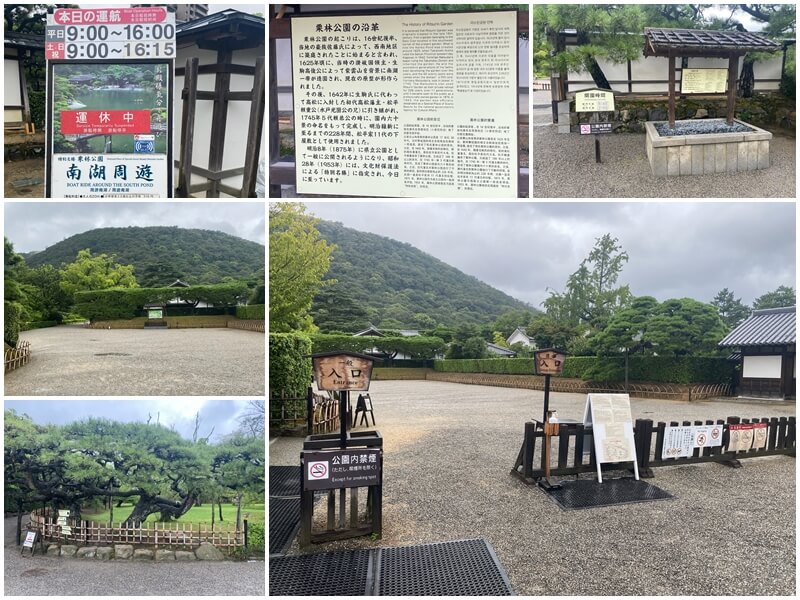
We had checked beforehand and knew that the pleasure boats wouldn’t be operating due to the approaching typhoon. So we decided to bring umbrellas and enjoy a stroll through the garden using our free vouchers. The garden is filled with beautifully maintained pine trees.
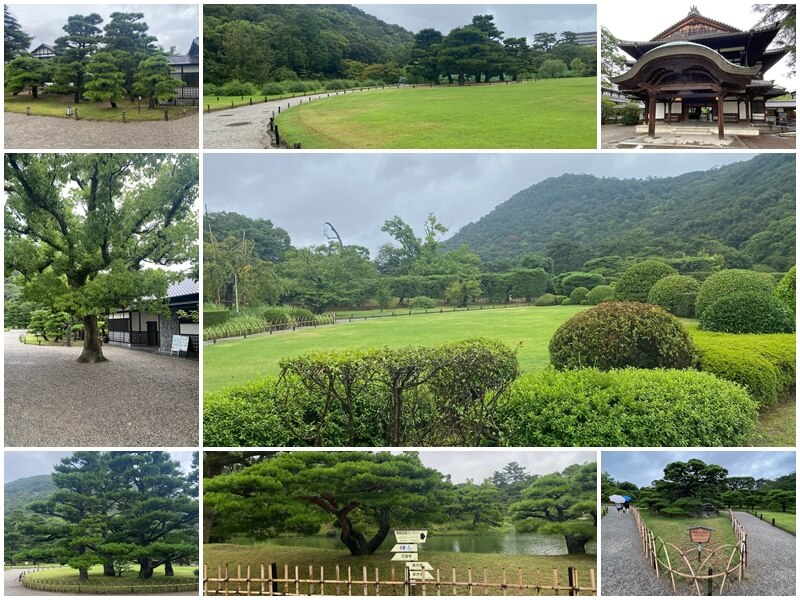
Ritsurin Garden is famous for having the finest pine trees in Japan. There are approximately 1,400 pine trees in the garden, about 1,000 of which are meticulously hand-pruned by skilled artisans. This tradition has continued for roughly 300 years. Throughout the garden, you can find famous named pines such as “Teue-Matsu” (Hand-Planted Pine), “Tsuru-Kame-Matsu” (Crane and Turtle Pine), and “Hako-Matsu” (Box Pine).
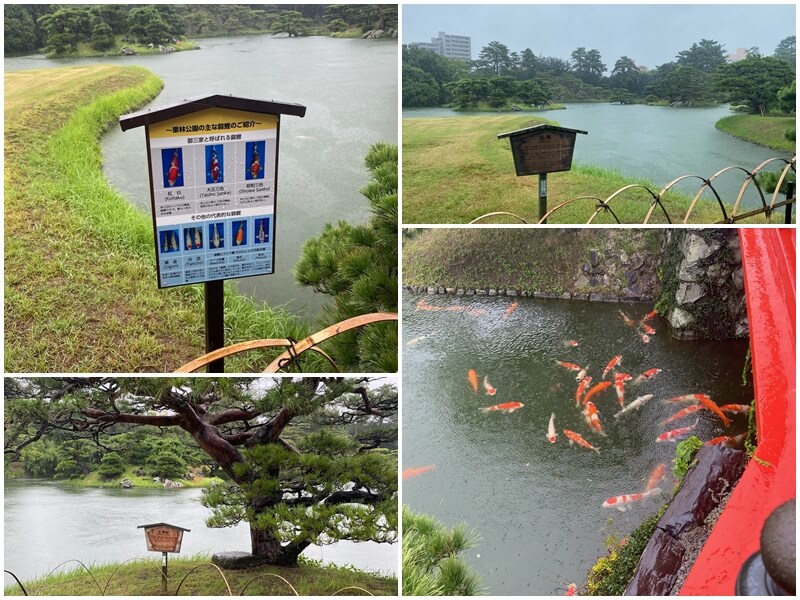
Suddenly, the rain started pouring even harder. Each of us opened our umbrellas, and at that time, there were very few visitors in the garden. We only spotted one visitor feeding koi fish and turtles by Hokko (the North Pond).
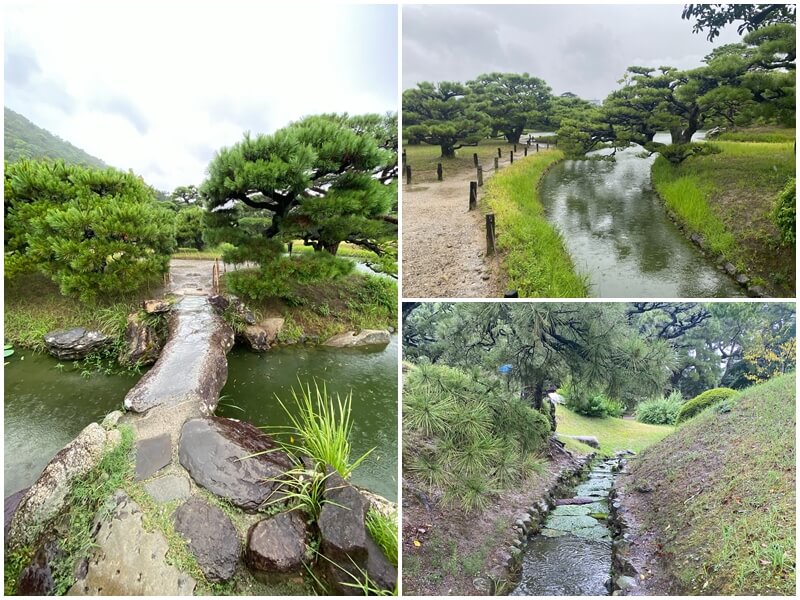
Our family decided to explore other parts of the garden and walked along a small path beside Hokko, admiring the beautiful pine trees that looked like they had been painted onto a canvas.
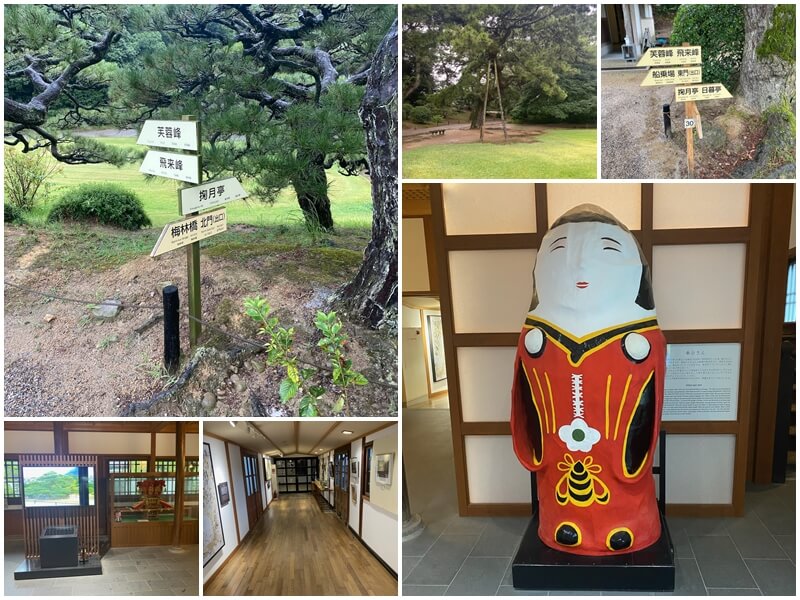
As the rain became too heavy, we moved indoors to visit the Sanuki Folk Craft Museum, located within the garden grounds.
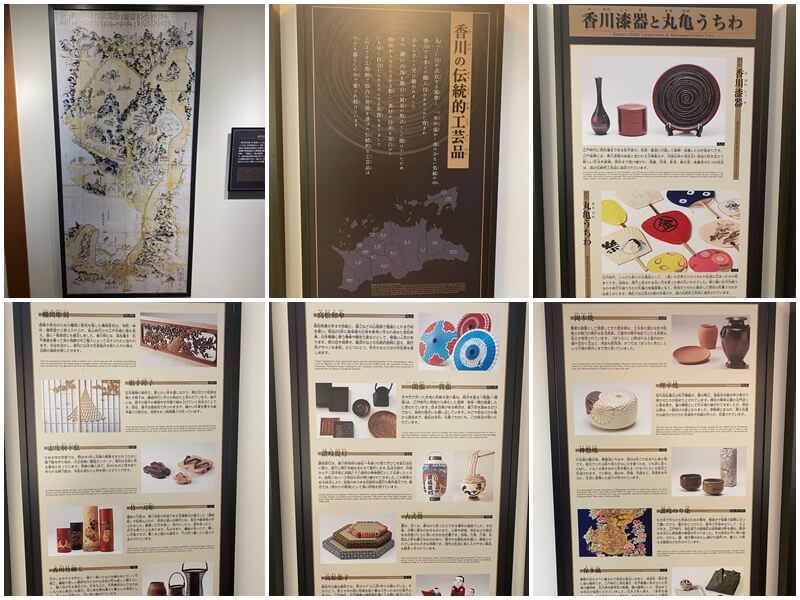
The museum showcases traditional crafts from Kagawa Prefecture, including Kagawa lacquerware, Sanuki wood carvings, paulownia wood boxes, and items crafted from fat pine wood.
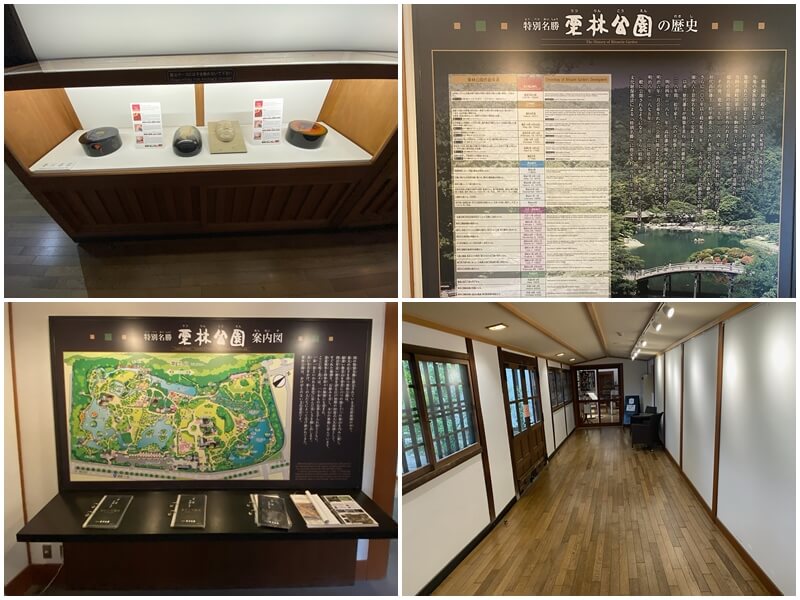
The Kagawa lacquerware pieces were especially exquisite, with a deep black hue and an elegant texture. The museum also provided detailed information about the history of Ritsurin Garden, making it a truly worthwhile stop.
Next time we visit Takamatsu in Shikoku, we hope to spend a peaceful half day exploring Ritsurin Garden under better weather conditions.
Ritsurin Garden(栗林公園)
Website:https://www.my-kagawa.jp/ritsuringarden
Address:1-chome-20-16 Ritsurincho, Takamatsu, Kagawa 760-0073日本
Phone:+81878337411
Opening Hours: 5:30 AM – 6:30 PM
Map:
More articles :
- Had curry rice with braised beef tendon at Hinoya Curry in Utazu, Shikoku
- Visit the Shikoku Aquarium to see adorable otters enjoying snacks and impressive dolphin performances
- There is a delicious bento shop called Hokka Hokka Tei on the way from Utazu Station to the Shikoku Aquarium